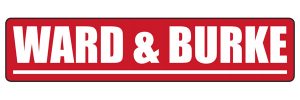Loftsome Bridge WTW – Intake (2019)
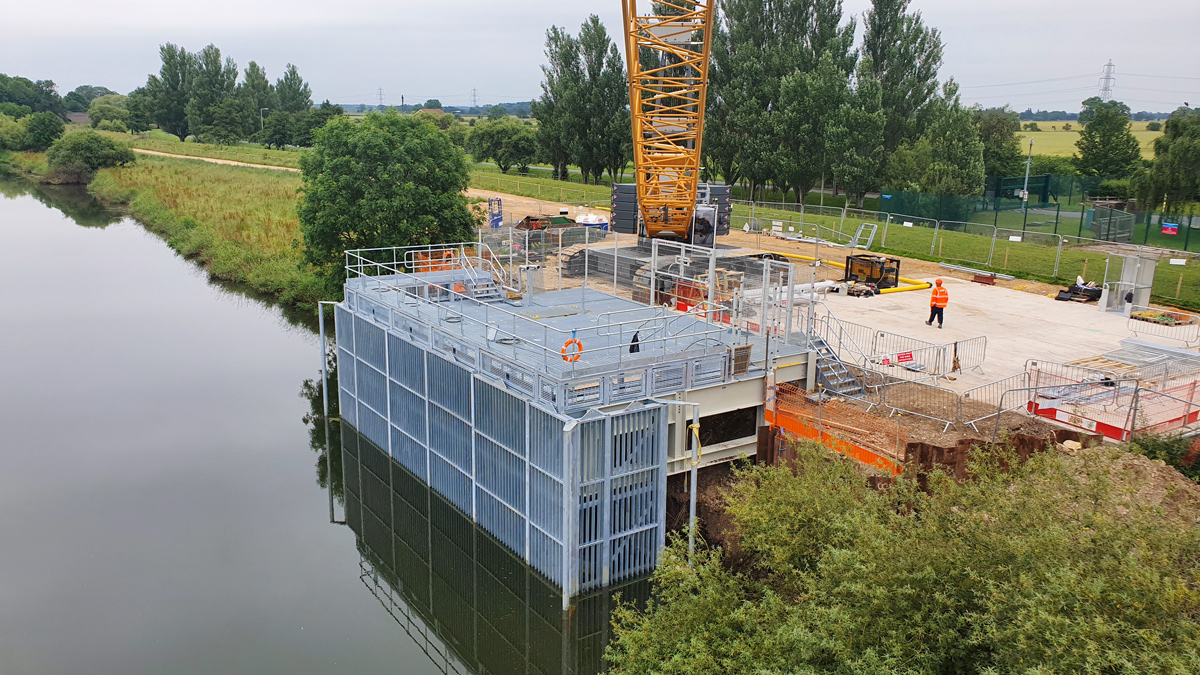
Platform fully installed ready for screens - Courtesy of Yorkshire Water & Ward and Burke
Yorkshire Water’s Loftsome Bridge Water Treatment Works (WTW) is sited off the A63 between Selby and Howden in East Yorkshire. This WTW is a key part of the Yorkshire Water Services’ network, serving the Hull distribution network and contributing significantly to the Yorkshire Water Grid System. The WTW abstracts water from the River Derwent which provides the plant with a source of raw water. Demand profiles are seasonably variable and the site has an abstraction licence for 150 MLD. Yorkshire Water appointed Ward & Burke Construction for the design and construction of a new Hydrolox travelling water screen arrangement to screen the water at the river intake to reduce/eliminate anthropogenic mortalities caused from abstraction, and to decommission the existing cup screens within the main treatment works.
Project driver
APEM Aquatic Scientists completed an eel screening assessment of Yorkshire Water’s high priority potable water river intake sites as notified by the Environment Agency. This assessment identified a non-compliance at Loftsome Bridge WTW due to the absence of a fish or eel return recovery system/best practice fish screen on the existing intake screens.
The Environment Agency confirmed the requirement of a compliant solution for Loftsome Bridge WTW and agreed a regulatory output date of the end of the current AMP period.
To reduce anthropogenic mortalities on European eel stocks, the Eels Regulations stipulate that if served a notice from the Environment Agency (EA) an organisation is required to install an eel complaint screen on abstraction intakes or fish recovery system. This European Union Regulation has been transposed into UK law through the aforementioned Eels Regulation.
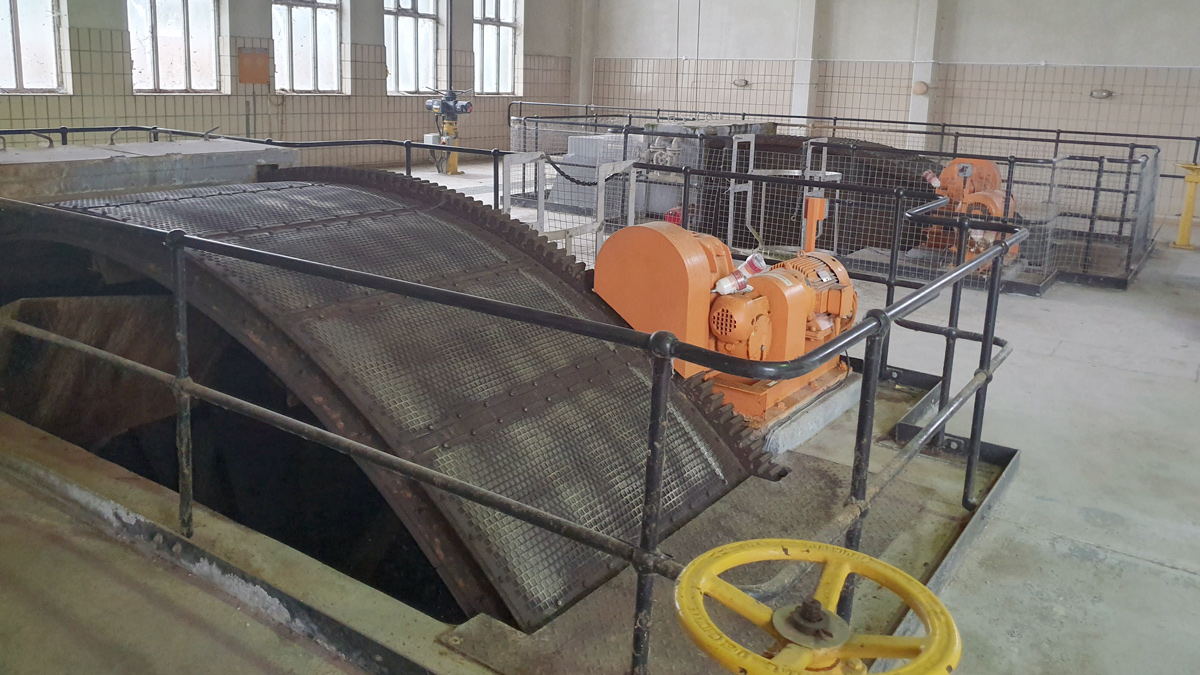
View of existing cup screens within the main treatment works building – Courtesy of Yorkshire Water and Ward & Burke
The EA adopted a risk-based approach to assessing compliance taking into account the level of risk to eel populations, technical feasibility and financial considerations. Yorkshire Water completed a cost beneficial analysis based on this EA methodology.
The calculated output cost limit for a compliant solution at Loftsome Bridge WTW was £10.1m meaning that the scheme would need to be estimated above this value to be rejected on financial considerations.
Scope of works
The preferred solution is the construction of EA approved Hydrolox, traveling fine mesh (1.75mm) screens for the exclusion of fish and eels on the existing river intake structure. The screens will be mounted on a new steel support with an in-built trash system to return any debris back to the water course. The water screens will be fully automated and controlled remotely from the new MCC situated within the treatment works control building. All elements associated with the existing intake cup screens will be decommissioned.
Planning
Loftsome Bridge Intake is located on a public walkway and the planning process was identified early on as a major project risk. Following investigation and consultation with the local planning authority, the work was deemed to be under permitted development rights and therefore did not require planning permission.
However, given the sensitive location of the works photomontages were developed to provide a visualisation of the proposed structure. The Environment Agency also use the existing intake structure as a location for river level monitoring, so the structure was required to accommodate this in the new design.
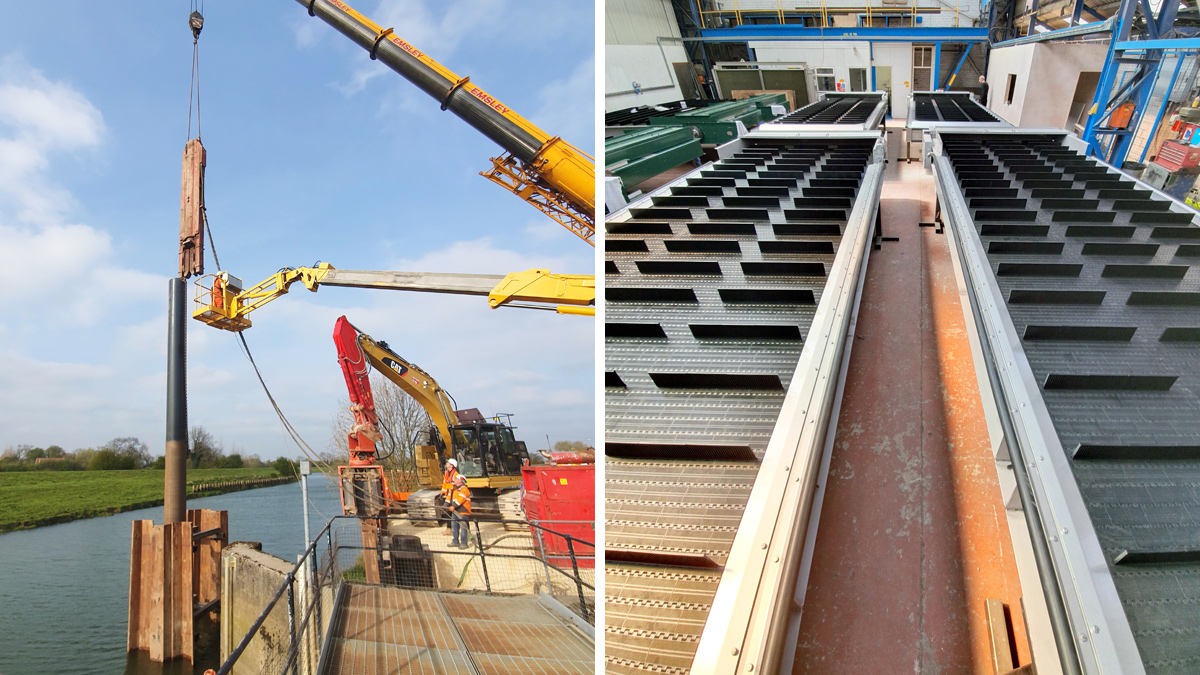
(left) 600mm diameter tubular piles being installed in the River Derwent and (right) Hydrolox Screens ready for shipping – Courtesy of Yorkshire Water and Ward & Burke
Design constraints
The River Derwent is a tributary of the River Ouse. This river is tidal and as a result downstream from the WTW there are actuated gates which result in varying levels of river level between 1m and 6m.
- Screen size to be 1.75mm.
- Screens or structure must not hinder the existing navigability for leisure boats.
- Protect screens and access from floating debris and impact.
- Maximum inlet flow 150 MLD at a river level of 1.5m with at least one screen out of service. Maximum inlet flow of 110 MLD at a river level of 1.0m with 4 (No.) screens all in duty mode.
- Minimum operational intake flow 25 MLD.
- Existing intake structure as built structural details not available.
- Intake/treatment or output of the work could not be impeded during the construction phase.
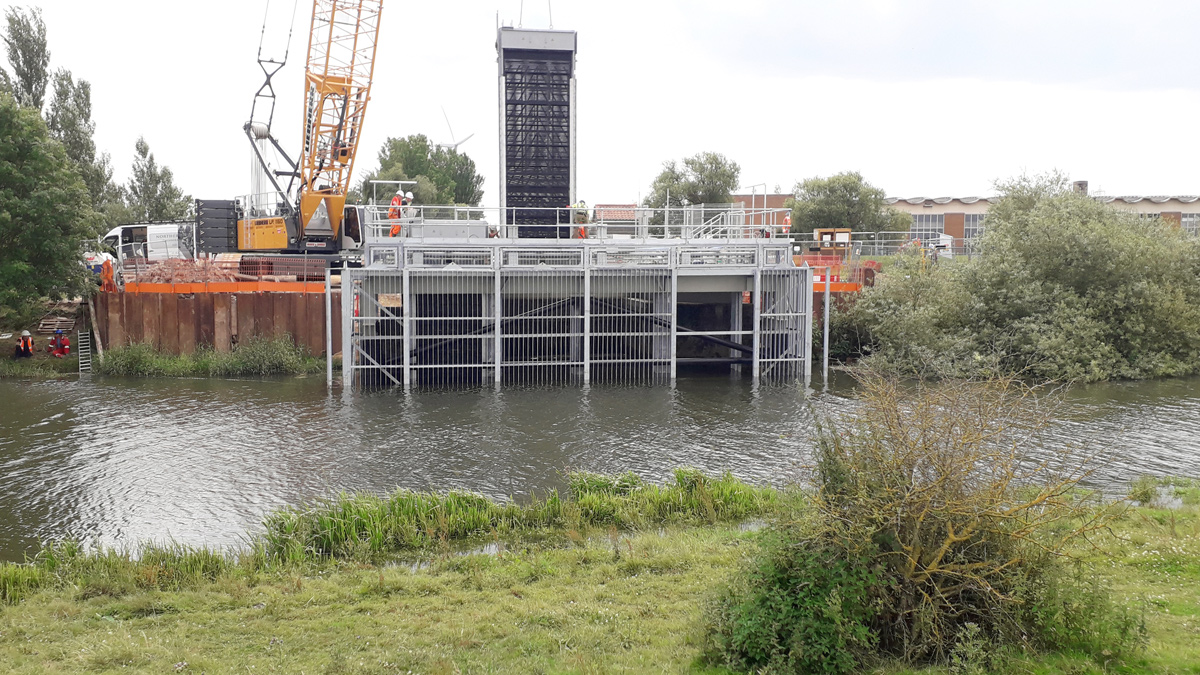
Hydrolox screens being installed – Courtesy of Yorkshire Water and Ward & Burke
Optioneering and design
The scope of work included detailed hydraulic and structural design to incorporate the rotating intake screens and associated frame onto the existing intake structure with minimal disruption to the surrounding environment. The key design challenge was to provide the required flow to the works with the minimum amount of screen area. This was very much dependent on the river levels. Hydrolox were engaged at the early design stage and initial designs were based on the option of using 3 (No.) screens to provide the intake requirement.
Loftsome Bridge Intake: Supply chain – key participants
- Principal designer & contractor: Ward & Burke Construction
- Motorised screening system: Hydrolox
- Steel platform manufacture: Keltec Engineering
- Structural design: JBA Consulting
- MCC control panel: Technical Control Systems
- Electrical installation: JRP Services
- Technical Documentation: 3rd Light Media
This scenario would have resulted in the screen fitting within the existing structure footprint, however, on review of historical river levels the level was lower than the outline assumptions and calculations showed that there was a need for 5 (No.) screens. On further review of the design, this would have resulted in major structural works/obstructed navigability of the river and resulted in the major over pumping to keep supply to the treatment works. The budgeted cost for the project would have more than doubled.
After in-depth discussion with the client and further review of historical EA river level data it was deemed that the required level to permit full flow to the works was 1.5m and historically the level was seldom below this. From these discussions it was agreed that four screens would be sufficient to provide the required capacity and that during low water level periods the site would have enough raw water storage to cover any short falls of reduced intake.
Using four screens their location would be just outside the existing intake structure wall meaning the screens would be in the flushing flow of the river which would help push debris downstream. This will in turn reduce the number of operations, thus increase the lifespan of the screens.
The design therefore consists of 4 (No.) Hydrolox travelling water screens which will be controlled automatically from a new MCC within the building.
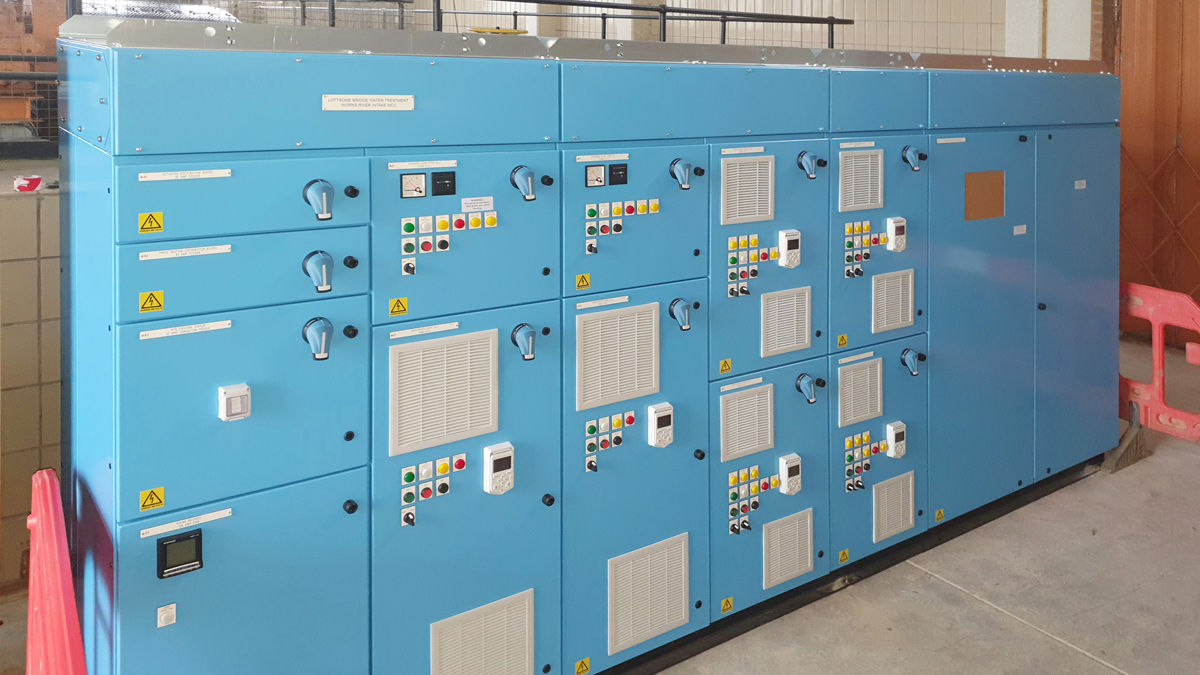
MCC panel from TAP, fully assembled ready for commissioning – Courtesy of Yorkshire Water & Ward and Burke
During the initial design review, working at height was identified as a major risk during periodic maintenance. Measures were taken to mitigate this risk through the design of an additional elevated access platform to allow safe access. This also resulted in all services being safely placed under the pedestrian routes and thus eliminated trip hazards.
The design also considered access to the platform which is within a flood plain. As the surrounding lands were not owned by Yorkshire Water and regularly accessed by the public the initial design of an access bridge to the platform was removed, so a visual and audible alarm has been designed so warn operators in advance of approaching high-water levels to avoid the risk of being trapped on the platform. The safety device is triggered upon entry of the security gate.
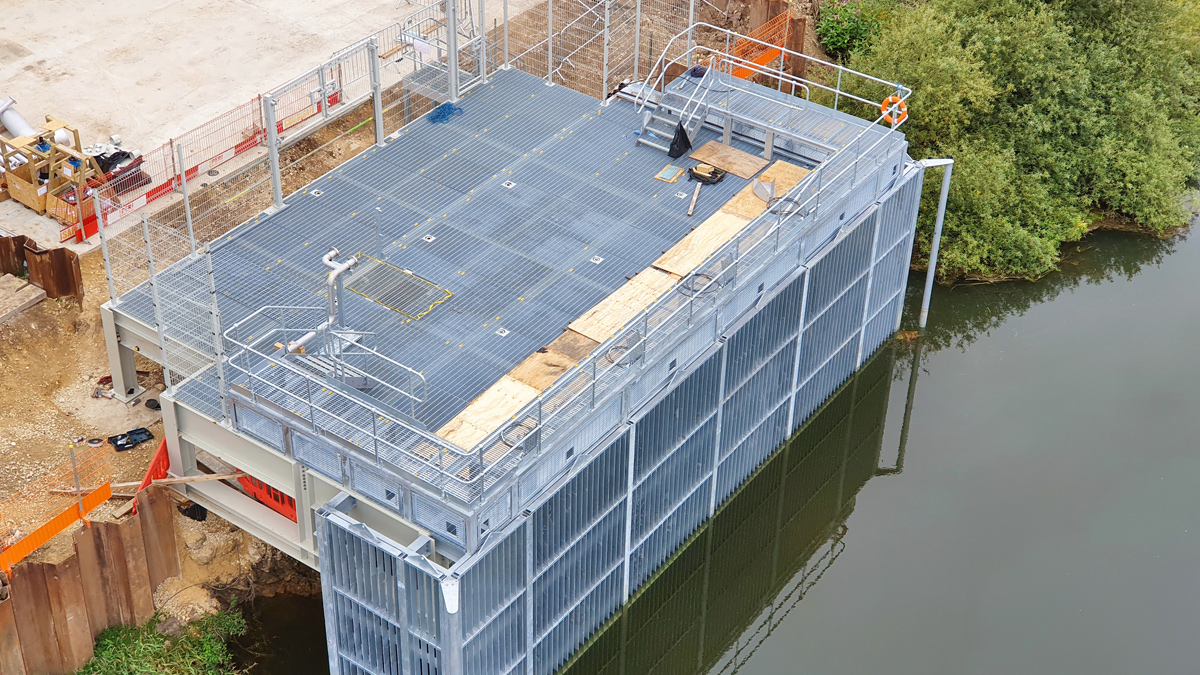
Intake structure near completion – Courtesy of Yorkshire Water and Ward & Burke
Design optimisation
The scheme was extensively modelled in 3D throughout its conception and design. This provided a high degree of clarity which aided collaborative design reviews and with the construction phase in helping drive project efficiencies. The 3D models were used at each milestone review, HAZOPs, HAZCOM’s and ALM studies. The team initiated a 3D digital cloud point survey of the existing structure which was integrated into the 3D model. The employment of 3D for the scheme simplified the process for client review.
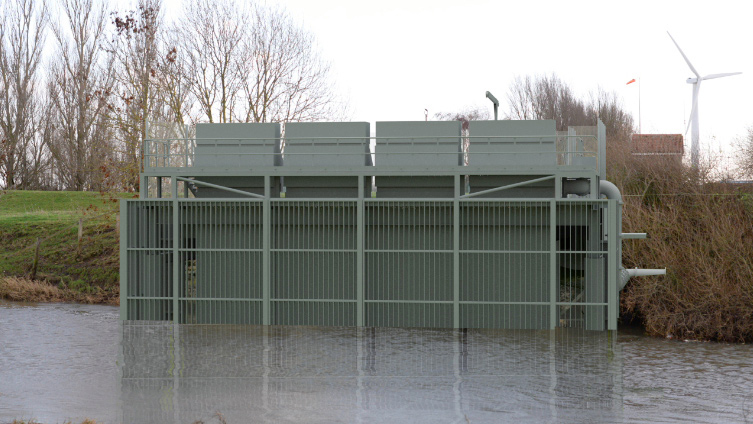
Photomontage of the view intake screen – Courtesy of Yorkshire Water & Ward and Burke
Solution
The investigation works concluded that due to a lack of structural details, it was not possible to assess the existing structure for the capacity to take additional loading from the screens and the platform. The design confirmed that the new screens required zero settlement thus an independent platform would be required to be placed on 600mm diameter steel tubular piles driven 18m below GL.
As the intake of water to the treatment works could not be restricted for any more than a 3 day window, it was necessary that the new structure to be designed and manufactured off site so that it could be installed without any requirement to stop intake flows. This was achieved by the manufacture of a 36t steel structure that could be assemble and installed as one complete unit.
Progress to date/anticipated completion
The intake screen construction works commenced January 2019 and the screens are expected to be installed and commissioned by August 2019. The removal of the existing cup screens can commence upon successful commissioning of the new screens.



